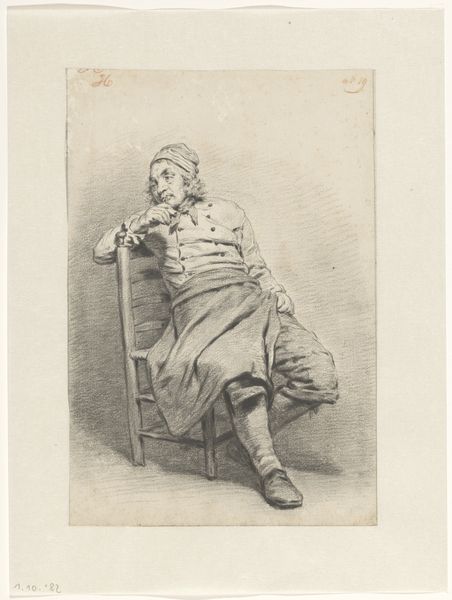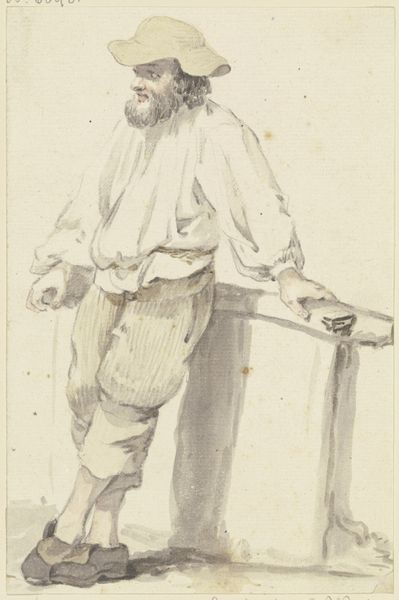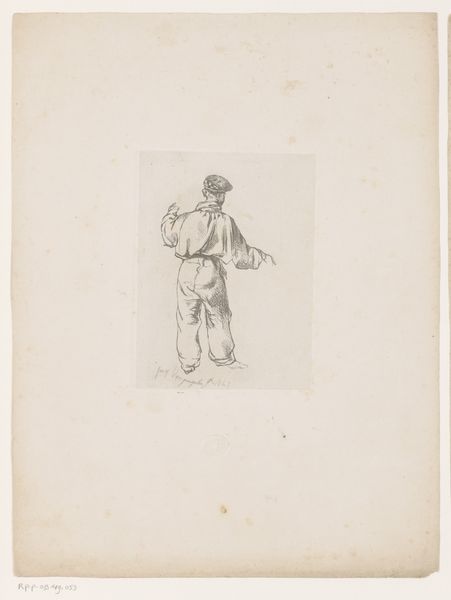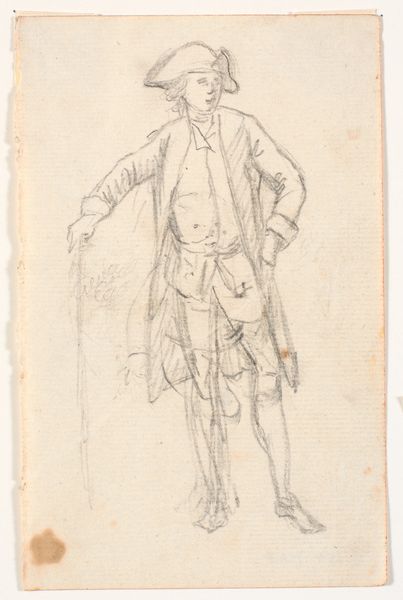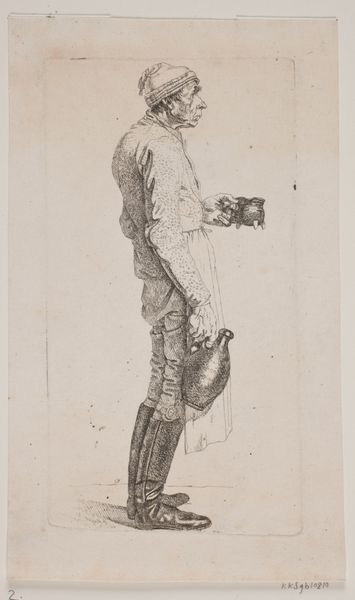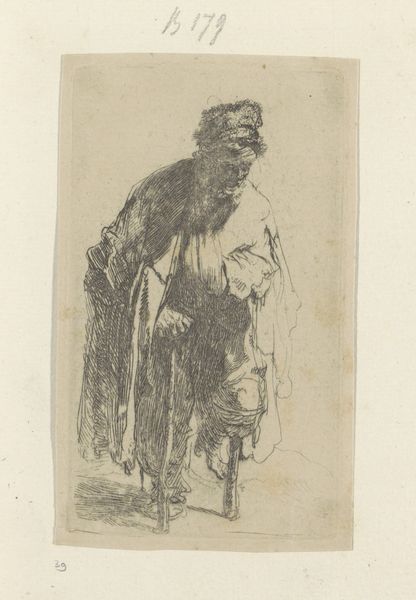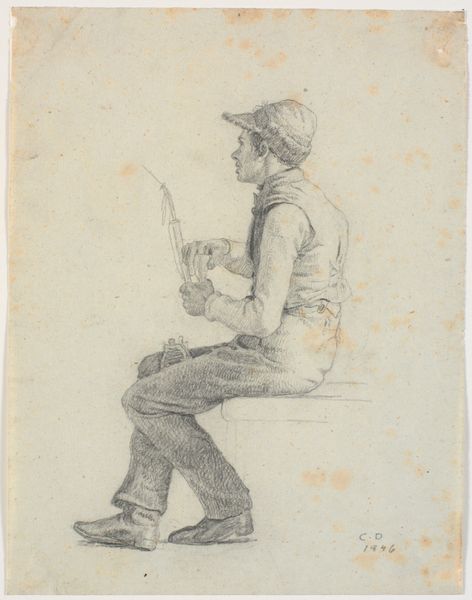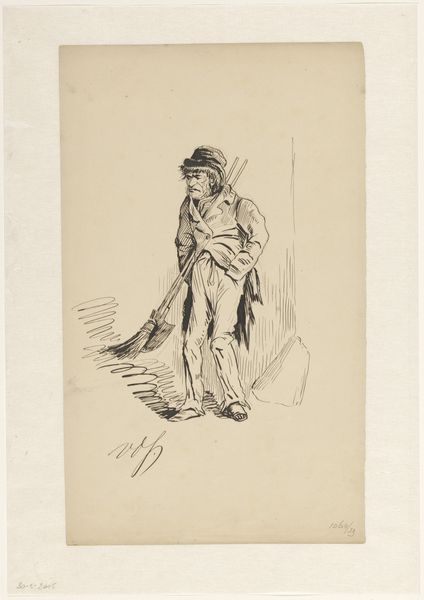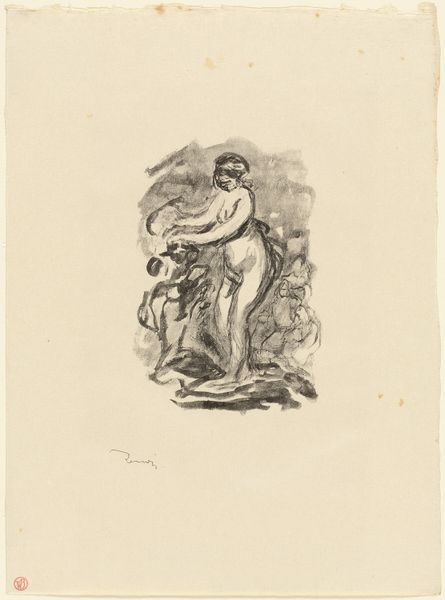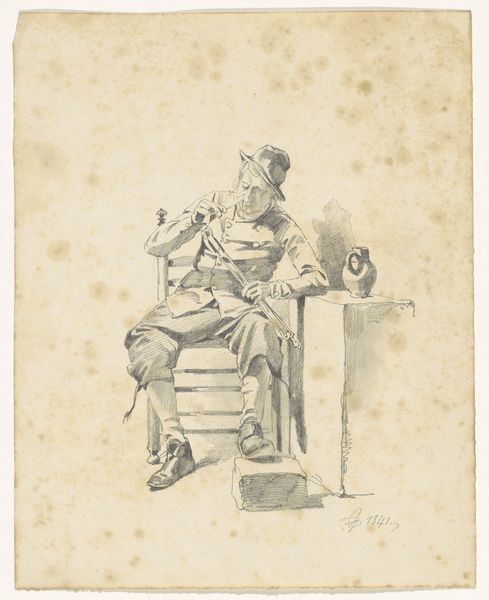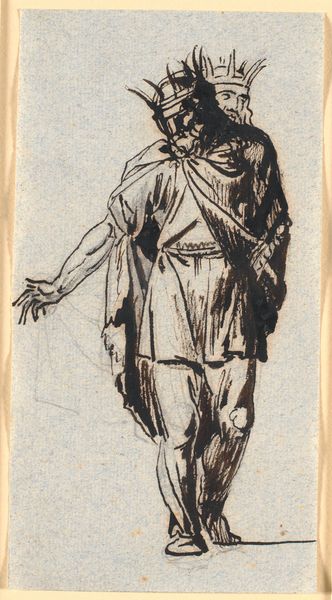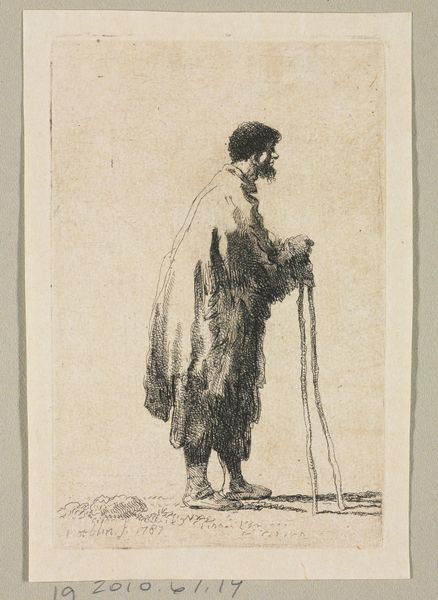
Batyllus, skuespiller på Augustus' tid, siddende i en svær antik stol, en face, med et bæger i hånden 1743 - 1809
0:00
0:00
drawing, ink, pen
#
portrait
#
drawing
#
imaginative character sketch
#
toned paper
#
light pencil work
#
ink drawing
#
neoclassicism
#
personal sketchbook
#
ink
#
ink drawing experimentation
#
pen-ink sketch
#
sketchbook drawing
#
pen
#
watercolour illustration
#
history-painting
#
sketchbook art
Dimensions: 216 mm (height) x 156 mm (width) (bladmaal)
Curator: So, here we have Nicolai Abildgaard’s ink drawing, made somewhere between 1743 and 1809. The museum's title is rather descriptive: "Batyllus, skuespiller på Augustus' tid, siddende i en svær antik stol, en face, med et bæger i hånden"—Batyllus, an actor from the time of Augustus, sitting in a heavy antique chair, facing us, with a beaker in his hand. Editor: He looks comfy, doesn't he? A little disheveled, but powerful. Sort of radiating that "end of a long day, this is my downtime" vibe. The loose sketchiness gives it that candid feel, almost like a snapshot. Curator: Indeed. Abildgaard was a prominent figure in the Danish neoclassical movement. His work often engages with historical and mythological subjects, reflecting the period’s interest in antiquity as a source of artistic and ethical ideals. The choice of Batyllus, a celebrated pantomime actor from ancient Rome, situates the drawing within a broader cultural narrative that seeks to emulate classical greatness. It speaks to questions of representation, performance, and the construction of identity through art. Editor: Absolutely, and look at the confident strokes capturing his relaxed posture, the weight in his limbs as he's sunk into that monumental chair, that glass…or is it a chalice?...in his hand. All tell a story on their own. But, I confess, I’m wondering why Abildgaard was drawing this specific person—a minor figure in theatre history to be sure. Was it simple fascination, a study of a past era through someone famous from then, or… ? Curator: Abildgaard's interest in classical antiquity must be placed within the political context of his time. Europe was grappling with revolutionary ideas and societal upheaval. The turn to classical models provided a framework for envisioning alternative forms of governance and civic virtue. Batyllus, as a performer, becomes an interesting figure in this context because actors are those through which society stages reflections of themselves. I suppose this image invites us to meditate on the role of the artist in shaping collective consciousness. Editor: Well, for me, that shadow cutting sharply across his body hints at a personal struggle, even inner turmoil perhaps? Regardless of grand historical narratives, this image manages to communicate something essentially human. A tiny spark of something like: 'he was here.' You know? Curator: A poignant observation. It seems even through the lens of neoclassicism, individual experiences resonate. Editor: Always does. Always will.
Comments
No comments
Be the first to comment and join the conversation on the ultimate creative platform.

